Text
seasonal wetland plants
it's that time of year again! here are three different plants i found growing in some seasonal wetlands near me.

skunk cabbage
they weren't lying that cabbage can skunk! this stuff grows plentifully both in and beside the water, and it's got a stench to it that only gets stronger the bigger it grows. it's also pretty toxic for humans to eat, if the smell wasn't enough of a deterrent.

iris
irises are EVERYWHERE! i can't wait to see these guys bloom. the ones here are probably yellow flag irises, which are considered invasive. judging by how many of them i found in 4 different wetland locations, i believe it.
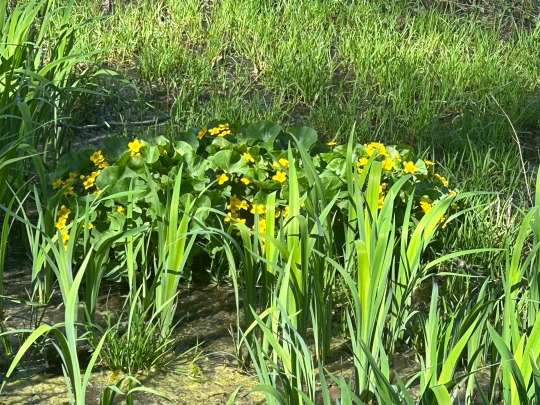
yellow marsh marigold
a nice native plant to balance out the irises. i can never get a good picture of this plant, since it's out so far into the water. i wish i could see it up close, but i must admire her from afar. despite its name, it's actually a part of the buttercup family!
as a little bonus, here's two pictures of skunk cabbage i took ten days apart in the same location, because it made me so happy to return and see it so much bigger (even though the smell was worse).


3 notes
·
View notes
Text
I watch a ton of great youtube videos about halting and reversing desertification but now youtube recommends me a ton of videos of people using those techniques to turn desert ecosystems into farmland.
If you see these too, please downvote them. Going to desert ecosystems and planting food forests is not a trend we should be starting. Many plants and animals are endemic to those areas and those ecosystems are worth protecting. Deserts are not wastelands.
These videos mislead people into thinking that this is a good thing for the environment just because there is more green. Nothing could be further from the truth. There are so many actual forest ecosystems that need to be restored, we should not be wasting energy foresting deserts that have been deserts for millennia.
3K notes
·
View notes
Text

just found out that coniferous trees have two different types of pinecones—male (smaller) and female (larger). i took this picture originally thinking the male was a newly grown pinecone that would eventually develop into the fully-grown one. there's so much i have yet to learn about plants!
1 note
·
View note
Text

someone with a major in literature and/or poetry tell me what's so poetic about this that it captivated me because i have no idea honestly
8K notes
·
View notes
Text
took a short rainy walk today and met a couple new plants!

this little guy is named dutchman's breeches! i found a bunch of it in a small sliver of woods by the creek.

this is mayapple. it caught my eye today because the way its leaves droop in the rain makes it resemble a mushroom. apparently these guys grow in colonies from one root system, so they're all connected.


a couple pictures of the creek as well. the moss lining really makes it stand out. i'm pretty sure this is an ephemeral stream that's dry most of the year, but i don't have the best memory.
as a silly little bonus, here's my very underwhelming eclipse photo! i'm lucky to have seen totality, but unfortunately my phone camera couldn't handle it.
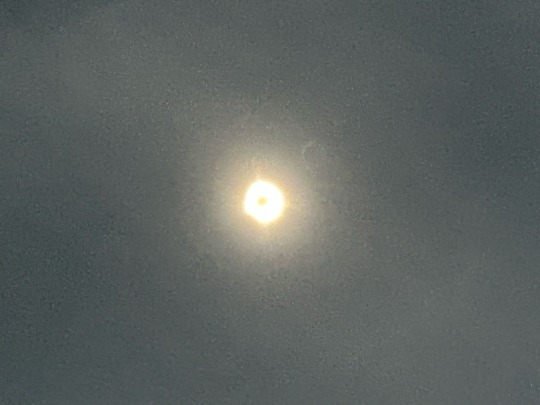
#errambles#native plants#nature#plant identification#mayapple#dutchman's breeches#such a silly name for a plant lol
1 note
·
View note
Text
fuck bradford/callery pears!!! they're not flowering yet here, but i remember seeing SO MANY of them last november. their autumn leaves are so bright, it's easy to pick them out.
i'm noticing with both callery pears and honeysuckle, two plants that are eating my area's woods alive, they're always some of the first plants to go green in spring, and the last to shed their leaves in fall. it makes it really easy to see the spread of these invasive species right before and after winter. and it's really disheartening, too. these fuckers just do not quit.
it's funny how the things that make them such popular choices for landscaping plants—lots and lots of flowers, long growth seasons—also make them so much of a problem in their non-native environment. and by funny, i mean really disheartening. where i live, i don't think we'll ever be free of the honeysuckle.
speaking of invasive species
The Bradford pears are blooming and it is a NIGHTMARE. They have spread so much since literally last spring that it's like bone chilling horrifying. The population of individuals capable of flowering has virtually doubled it's awful.
There are entire fields overtaken with them, acres and acres of Bradford Pear Hell, there's saplings springing up along every fence line and roadside, just thick masses of dozens of them everywhere.
And wherever I go, for every blooming tree, there's like. 50 more saplings that are still under a meter tall. It's bad but it's going to get a whole hell of a lot worse.
This has happened SO suddenly holy shit. I remember specifically in 2013 or so my family and I were talking about those weird white trees in an old pasture across the road from our house that was reverting to woods, and what they could possibly be, since it was too early for dogwoods.
Now? Those wretched demon trees are absolutely everywhere, along every fence and tree line and bypass and ditch, stinking like boys' locker rooms and dead animals. THE HORDES OF HELL ARE UPON US. GOD HAVE MERCY ON OUR SOULS
278 notes
·
View notes
Text

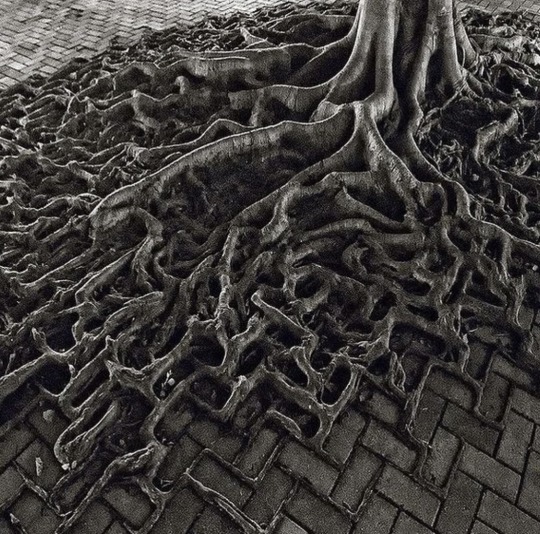

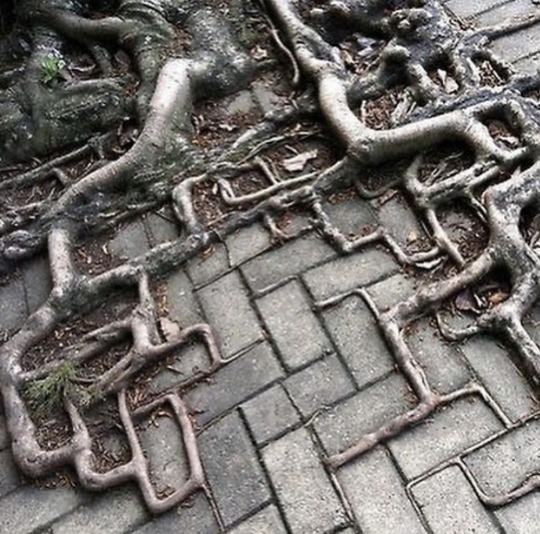

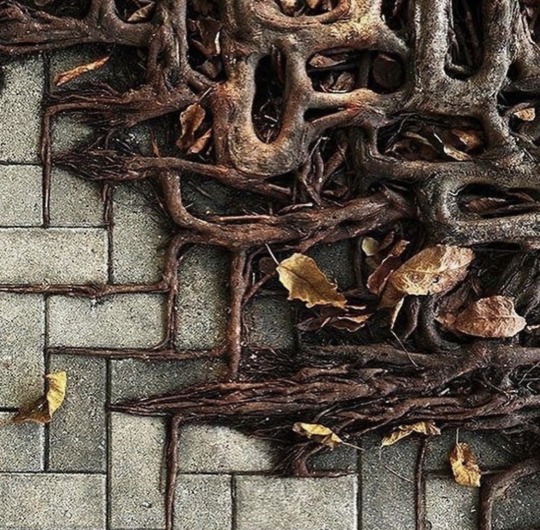
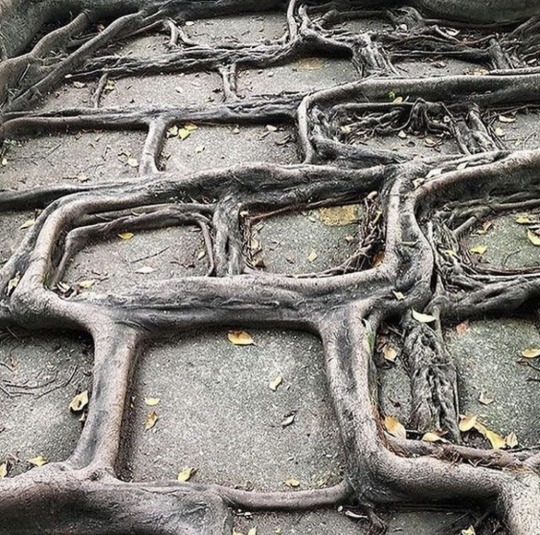

Tree roots following the pattern of concrete footpaths
71K notes
·
View notes
Text
hard to pick just one, but a plant i love is american bittersweet, the plant in my pfp! it's a vine that grows bright orange berries in the fall, and the stems frequently twist around each other to form a lovely spiral! here are some pics i took from last autumn :)
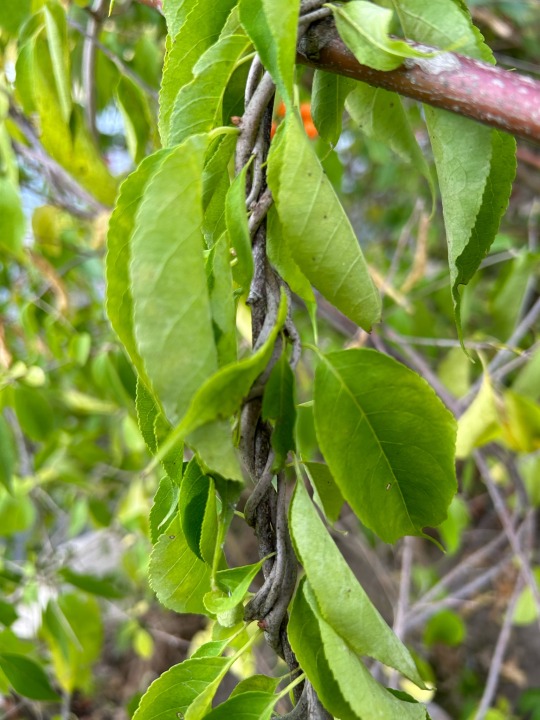

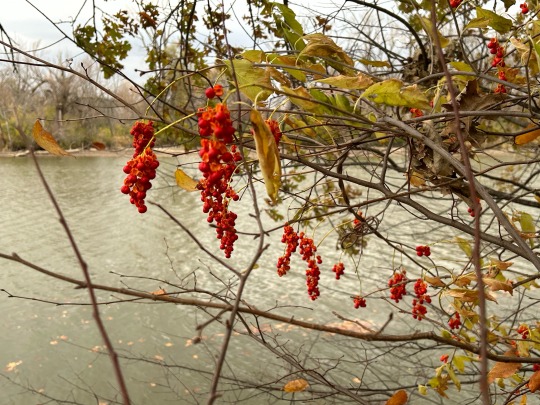
Reblog with a plant that grows where you live that you love :)
#bittersweet#native plants#couldn't find the one in my pfp so u can't really see the berries oopsy <3
1K notes
·
View notes
Text
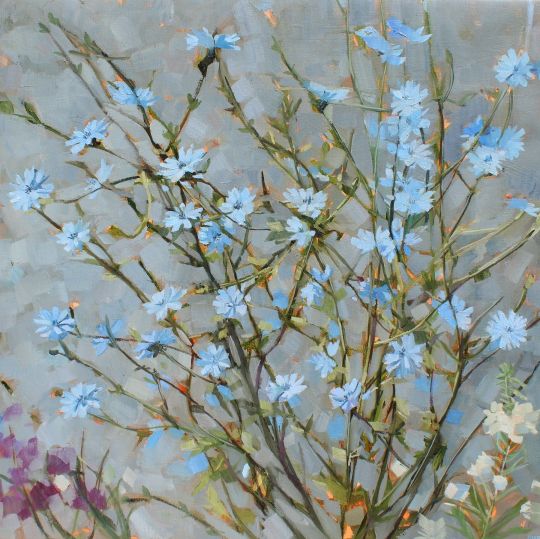
Anne-Marie Butlin (British, b. 1965, England, based Crouch End, North London, England) - Wild Chicory II, Paintings: Oil on Linen
652 notes
·
View notes
Text
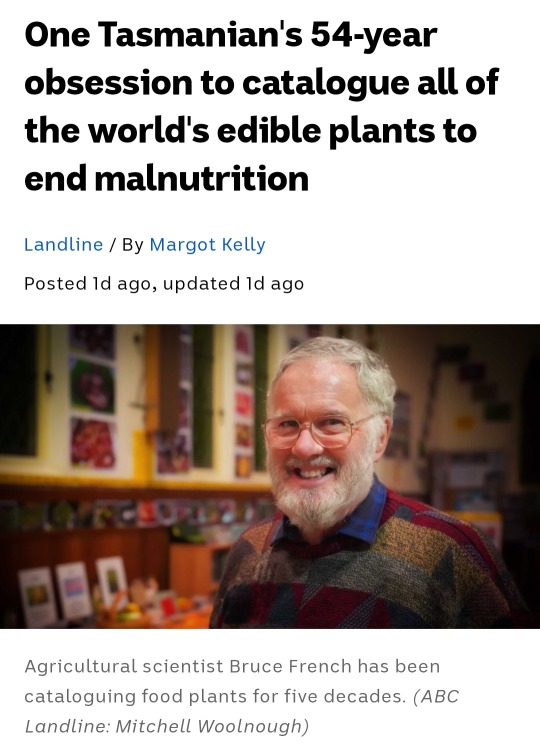
https://www.abc.net.au/news/2020-08-22/food-plant-solutions-malnutrition-farming-edible-plants/12580732
https://fms.cmsvr.com/fmi/webd/Food_Plants_World
This guy is my new hero. I LOVE learning about native food plants that just grow everywhere without human help.
The database is a little clunky to use (especially on a phone), but still loads of excellent information.
82K notes
·
View notes
Text
what's green in february?
the answer: moss, mainly. also wild garlic. (we don't care about turfgrass and boxwoods here.)


and of course, there's always daffodils. thank god for daffodils. and this magnolia, which surprised me today with its green, standing out sharply against the very dull grass that surrounded it.


for all of february's greys and desaturated browns, it makes everything green look like a tiny miracle. spring is on its way, bit by bit, and the first plants out on the scene are here to announce its arrival.
this blog is sure to come out of hibernation along with the plants. i can't wait to get back into the swing of things this year. already today i've been thrilled to bask in the sunlight, to get my hands dirty and crawl through the underbrush to get to the scant green of late winter, to marvel at the earliest stages of growth this spring. it's only up from here! spring is coming, and i'll be first in line to welcome it with open arms.
#errambles#nature#when i walked outside for the first time today to hear the birds chirping i very nearly cried#i love the spring i am so full of hope!
0 notes
Text
I thought you might like these moss-filled pawprints in concrete which I saw earlier. :-)
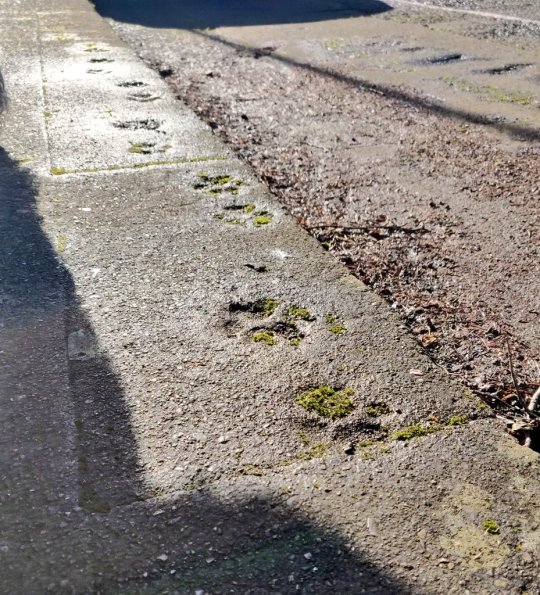

105K notes
·
View notes
Text

Today I learned that "mangrove" is not a biological classification of plant, and instead a general word for trees and shrubs that are specially adapted to grow in coastal areas periodically inundated because of tides.
#this is kinda blowing my mind wow#mangroves#i've only come across two types of mangroves myself and both were on vacation
314 notes
·
View notes
Text
The knowledge of some common plants
Since many people don't know most of the plants around them, this is information on some plants that are commonly seen in many places throughout the world

This is Lamium purpureum, also called Purple Deadnettle.
It's called deadnettle because it looks like a nettle but it doesn't sting you
This plant is a winter annual—it grows its leaves in the fall, lasts through the winter, and blooms and dies in the spring
Its pollen is reddish orange. If you see bees with their heads stained reddish orange, it is likely because they have visited Purple Deadnettle
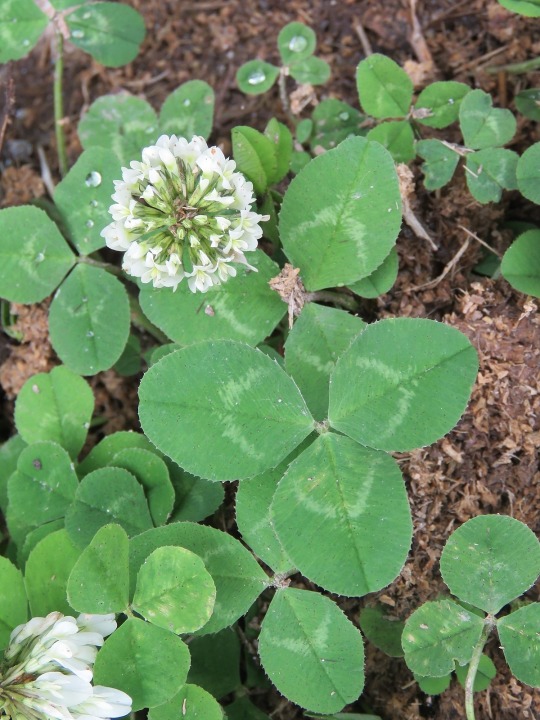
This is Trifolium repens, white clover
It is a legume (belongs to the bean family) and fixes nitrogen using symbiosis with bacteria that live in little nodules on its roots, fertilizing the soil
It is a good companion plant for the other members of a lawn or garden since it is tough, adaptable, and improves soil quality. According to my professor it used to be in lawn mixes, until chemical companies wanted to sell a new herbicide that would kill broadleaved plants and spare grass, and it was slandered as a weed :(
It is native only to Europe and Central Asia, but in the lawns they are doing more good than harm most places
Honeybees love to visit clover
Four-leaf clovers are said to be lucky
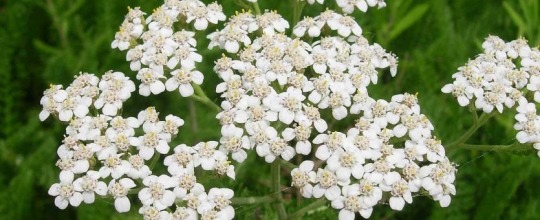
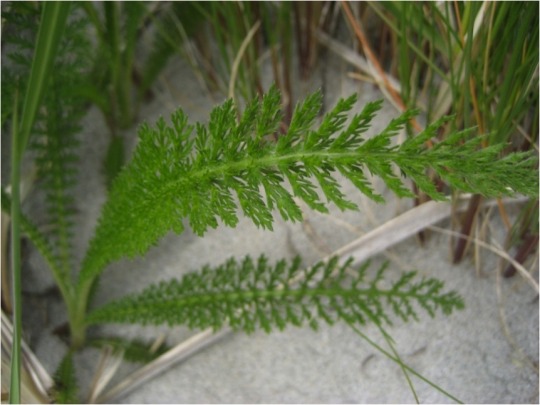
This is Achillea millefolium, Common Yarrow
It has had a relationship with humans since Neanderthals were around, at least 60,000 years, since Neanderthals have been found buried with Yarrow
Its leaves have been used to stop bleeding throughout history, and its scientific name comes from how Achilles was said to have used Yarrow to stop the blood from the wounds of his soldiers. A leaf rolled into a ball has been used to stop nosebleeds
It is a native species all throughout Eurasia and North America

This is Cichorium intybus, known as Chicory
The leaves look a lot like dandelion leaves, until in mid-spring when it begins growing a woody green stem straight up into the air
Like many other weeds, it has a symbiotic relationship with humans, existing in a mix of domesticated or partially domesticated and wild populations
It is native to Eurasia, but widespread in North America on roadsides and disturbed places, where it descended from cultivated plants
Its root contains large amounts of inulin, which is used as a sweetener and fiber supplement (if you look at the ingredients on the granola bars that have extra fiber, they usually are partly made of chicory root) and has also been used as a coffee substitute
A large variety of bees like to feed upon it

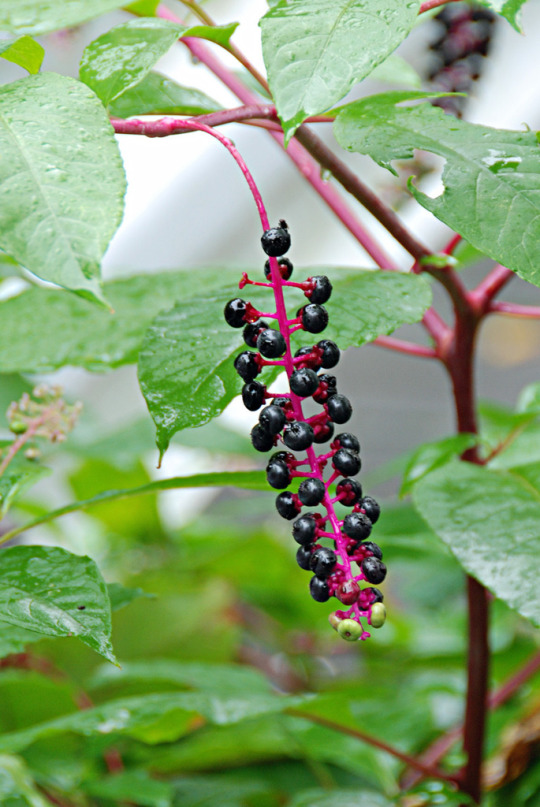
This is Phytolacca americana, known as Pokeweed
It is easily identified by its huge leaves and its waxy, bright magenta stem
It can grow more than nine feet tall from a sprout in a single summer!
If you squish the berries, the juice inside is a shocking magenta that is so bright it almost burns your eyes. For this reason many Native American people used it for pink and purple dye.
It is a heavy metal hyperaccumulator, particularly good for removing cadmium from the soil
All parts of the plant are poisonous and will make you very sick if you eat them, however if the leaves are picked when very young and boiled 3 times, changing out the water each time, they can be eaten, and this is a traditional food in the rural American Southeast, but I don't want to chance it
British people have introduced it as a pretty, exotic ornamental plant. I think that is very funny considering that here it is a weed associated with places where poor people live, but maybe they're right and I need to look closer to see the beauty.
If you see magenta stains in bird poop it is because they ate pokeweed berries- birds can safely eat the berries whereas humans cannot

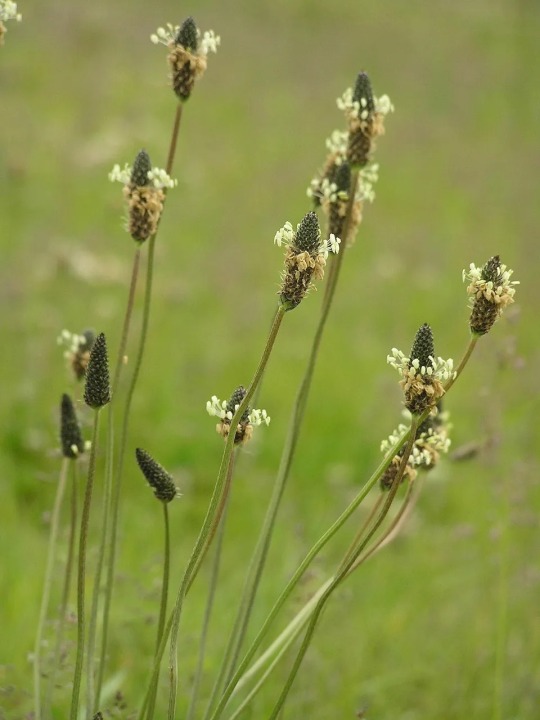
This is Plantago lanceolata, Ribwort Plantain
It grows in heavily disturbed soils, in fact it is considered an indicator of agricultural activity. It is successful in the poorest, heaviest and most compacted soil.
The leaves, seeds, and flower heads are said to be edible but the leaves are really stringy unless they are very young. Of course, it is important to be careful when eating wild plants, and make sure you have identified the plant correctly and the soil is not contaminated
I have also heard the strings in the leaves can be extracted and used for textile purposes
and that's some common plants you might often see throughout the world
#some of my faves are in here!#deadnettle clover yarrow and plantain all grow in my yard#chicory and pokeweed are more common elsewhere#but i see all of these plants on a regular basis#well the plantain usually comes up as blackseed broadleaf or narrowleaf#there are lots of types of plantains! i don't consider myself an expert in identifying them all#i totally didn't know that deadnettle grows in the winter i love her even more now
5K notes
·
View notes
Text
#THIS IS MY DREAM#if i ever own a house in this godforsaken economy the whole lawn is gonna look like this
40K notes
·
View notes
Video
home grown national park
https://homegrownnationalpark.org/
658 notes
·
View notes
Text
the best macroalgae is by far the mermaids wineglass
12K notes
·
View notes